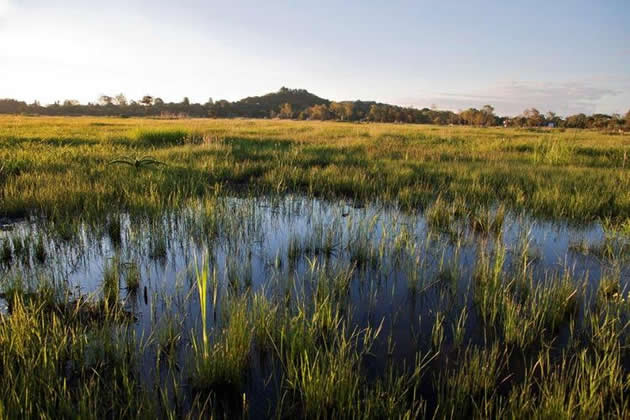Exhibition focuses on vanishing wetlands

The National Gallery of Zimbabwe in conjunction with the Environmental Management Agency will this year host the Tavatose/Sisonke 2015 Schools Art Exhibition on the Vanishing Wetlands of this country under the theme “Going, Going Gone: Vanishing Wetlands” scheduled to run in July and August at the National Gallery of Zimbabwe.
The exhibition’s aim is to promote artistic talent at young age whilst focusing on specific areas of concern for the nation.
“This exhibition is done to bring awareness to students on the conversation of managing wetlands and to learn their voices on what they think should be done to preserve these wetlands through their artworks,” said the NGZ Education Officer, Akim Nyakudya.
“We also plan on promoting artistic talents especially on young people that is why this exhibition is open to pupils from pre-school to those in high schools.”
Wetlands are areas where water covers the soil or its present either at or near the surface of the soil all year for varying periods of time during the year, including during the growing season. They occur where the water table is at or near the surface of the land, or where the land is covered by water.
The Environment Management Act (Cap 20:27) further on says, “Wetlands are areas of marsh, fen, peat-land or water, whether natural or artificial, permanent or temporary, with water that is static or flowing, fresh, brackish or salt, including riparian land adjacent to the wetland.”
Primarily, the factor that distinguishes wetlands from other land forms or water bodies is the characteristic vegetation of aquatic plants, adapted to its unique hydric soil.
Wetlands play a number of roles in the environment, principally water purification, flood control, shoreline stability and they also provide plenty of food for humans.
Wetlands are also considered the most biologically diverse of all ecosystems, serving as home to a wide range of plant and animal life.
Zimbabwe has many different habitats, from the rain forests of Eastern Highlands to the grasslands, rivers and wetlands provide critical habitat for numerous species.
If one walks into a wetland they would notice that the air is often cool and the ground damp if not soggy and full of numerous plants and animal species.
Today, human expansion is encroaching into wetlands without due consideration for traditional customs and values which is leading to the disappearance of the wetlands.
Traditionally the wetlands were preserved since they were regarded as sacred. Babies that were still-born were buried in Wetlands as it was believed that they would be protected by its spirits.
As a result, traditionally the temptation to disturb wetlands was greatly reduced.
The current decimation of wetlands which are sources of water and life is a 21st century crime against humanity.
“People must go back to traditional ways of preserving wetlands,” stressed Nyakudya.
“Back in the days wetlands used to be sacred and no one used to tamper around them, but nowadays they are treated just like any other places. This exhibition will raise an awareness of how important they are to all human nature and the ways of preserving them to remain intact.”
This exhibition is an open call to all students from pre-school to senior school to submit their artworks in relation to the theme.
Teachers are encouraged to explain some ideas such as locating actual wetlands, investigating what is happening on those lands at this time, for example human settlements in the form of houses, schools and churches. They should also explain to their students issues of water availability or non availability and the consequences of this on the lives of people, microscopic view of wetlands, what is living there for example insects, plants, birds, wild life and fish.
The NGZ has worked before on the topic with a number of artists and believe that it will be beneficial to mobilise school children to gather more awareness on this important environmental issue.
Teachers are encouraged to handle the subject in a creative way and encourage children to direct their imaginative faculties on the topic.
Artworks for the 2015 Schools Art Exhibition should be submitted in two dimensional works, that is drawings, painting and printmaking and three dimensional works which include sculpture, ceramics and construction. All artworks must have the name of artist, school, province, teacher, phone number, email address and price if for sale. Entry fee for each artwork is a dollar and the deadline for submission is the 12th of June 2015 at the NGZ Harare offices.
This is the second edition of the School Art Exhibition from last year’s which was run under the theme “Mbira”.










Comments